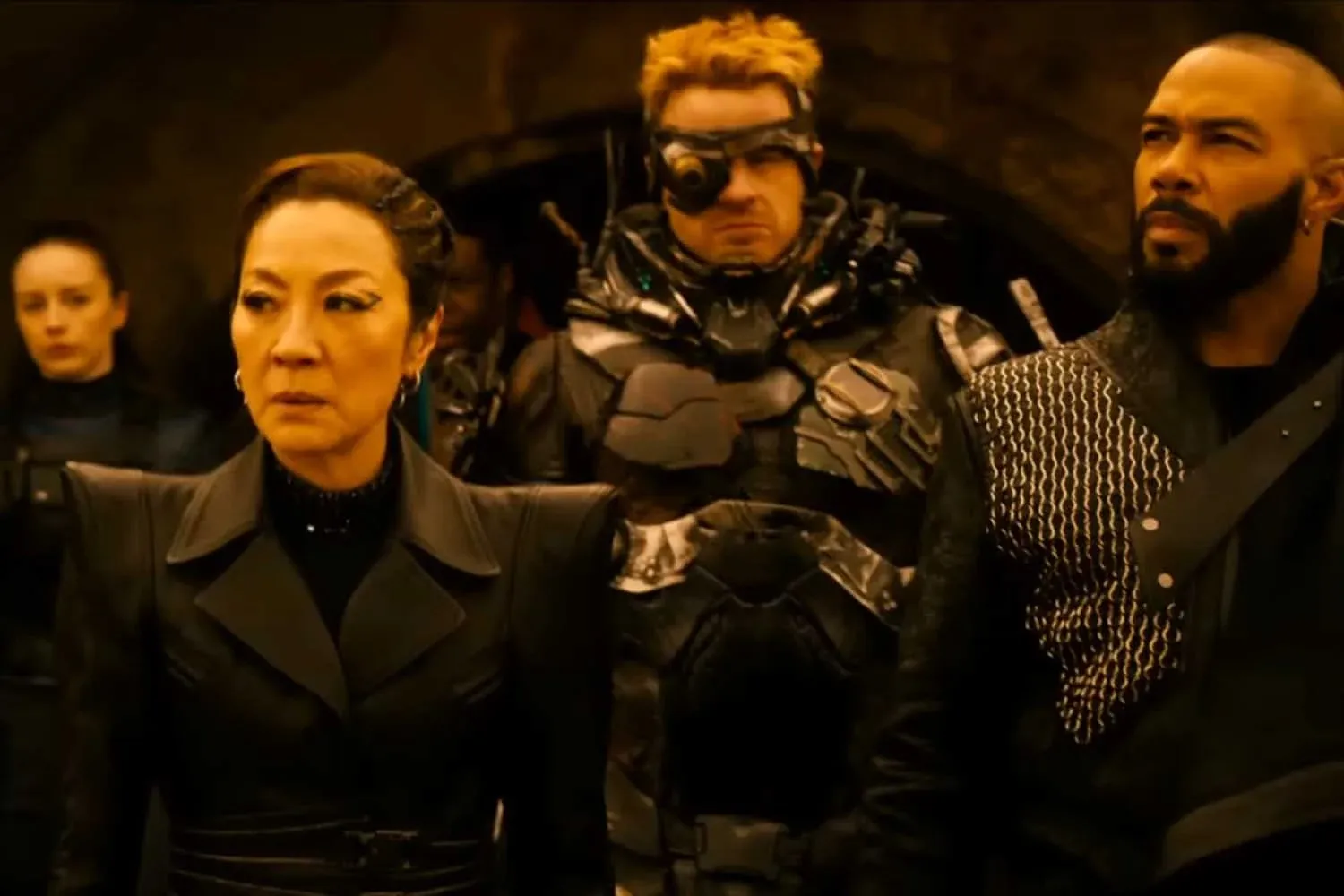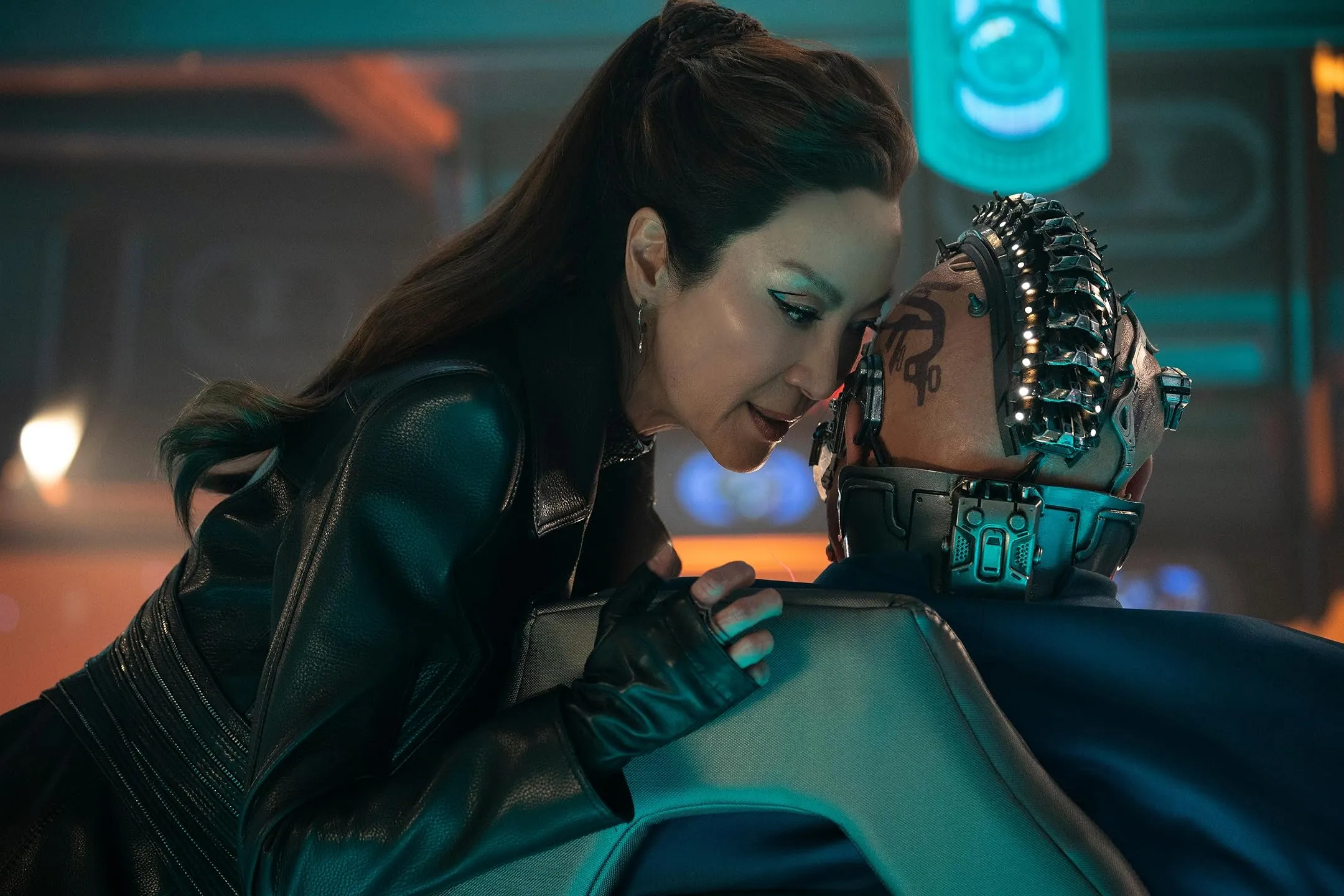Star Trek: Section 31 emerged through a complex media production process, initially designed as a showcase for Michelle Yeoh’s character, Philippa Georgiou. The project transformed from a potential series to a film, shaped by Yeoh’s increasing prominence and studio strategic calculations.
This narrative explores the tensions within a fictional space organization, examining how covert operations intersect with broader institutional ethics. The film attempts to navigate the space between idealistic principles and pragmatic action, though with mixed success.
The concept of Section 31 originally surfaced in Star Trek’s Deep Space Nine era, representing a shadowy organizational element that challenges traditional heroic narratives. This iteration presents the group as a more action-driven entity, stripped of the nuanced moral questioning present in earlier iterations.
The story reflects contemporary discussions about institutional integrity, exploring how organizations manage internal conflicts and ethical compromises. It questions the boundaries between necessary intervention and moral corruption, presenting characters who operate in ethically ambiguous territories.
This iteration signals a shift in storytelling approach, moving from hopeful science fiction towards a grittier, more cynical exploration of institutional dynamics. The narrative suggests an ongoing cultural dialogue about institutional transparency, power structures, and the compromises made in pursuit of perceived greater goals.
Plotting in the Dark: Narrative Collapse and the Weightless MacGuffin
Section 31’s storyline unfolds like a disjointed algorithmic hallucination—a weapon hunt so mundane it echoes Hollywood’s desperate franchise mining. The film’s heist structure, borrowed from sci-fi adventure tropes, feels like a pale imitation rather than genuine storytelling. The MacGuffin transforms into a stark representation of narrative commodification, where plot points get checked off like inventory and emotional depth dissolves into nostalgic fragments.
The mole narrative trudges predictably, its revelation carrying minimal narrative weight. Pacing lurches between sluggish exposition and frenetic action sequences, reflecting our fragmented media consumption patterns. Flashbacks to Georgiou’s brutal history clash jarringly with Quasi’s comedic shapeshifting, creating a tonal whiplash that suggests narrative schizophrenia.
Rachel Garrett’s unexpected appearance creates a temporal puzzle—is this calculated fan service or narrative randomness? The film remains noncommittal, emblematic of current storytelling’s fractured landscape. Its structural ambivalence seems to critique modern media’s tendency to prioritize spectacle over substance.
Beneath the chaotic narrative, a cynical energy pulses—a commentary on storytelling’s current state where meaning becomes disposable and narrative coherence feels increasingly obsolete.
Antiheroes in the Age of Exhaustion: The Empty Charisma of Starfleet’s Shadows
Michelle Yeoh portrays Georgiou as a complex character—a former tyrant attempting a questionable transformation. Her screen presence remains electric, with graceful action sequences punctuating her performance. While her physical prowess shines, the script constrains her to delivering sharp retorts that hover between imperial sarcasm and melodramatic posturing.
Flashbacks detailing her violent past should provoke discomfort, yet they feel superficial, lacking the nuanced emotional depth of her previous interactions. Yeoh delivers a compelling portrayal, though the character seems trapped between narrative expectations and genuine character development.
The supporting cast feels fragmented and underdeveloped. Alok, portrayed by Omari Hardwick, presents an intriguing background as a refugee-spy, but remains unexplored. Sam Richardson’s Quasi offers comedic potential through his shapeshifting abilities. Fuzz—a peculiar character blending Vulcan stoicism with an unexpected Irish accent—represents an experimental narrative choice that challenges traditional character archetypes.
Kacey Rohl’s Rachel Garrett appears as a missed opportunity. Her potential role as a moral counterpoint to Section 31’s shadowy operations remains unexplored, rendering her presence more symbolic than substantive.
Despite narrative limitations, Yeoh’s performance suggests deeper critiques about performative power structures and cultural expectations of leadership.
Utopia’s Shadow: When Star Trek Forgets to Ask ‘Why?’
The original Star Trek emerged from the 1960s’ ideological turbulence—a vision of a future where logic conquered tribalism, and ethical challenges drove storytelling. Section 31 operates with a Klingon bat’leth’s blunt force to the moral landscape.
The franchise’s trademark ethical complexity vanishes. The film reduces Section 31 to a space-based action squad, their leather uniforms suggesting more depth than their sparse dialogue. Georgiou’s line “Rules are for admirals” feels less like institutional critique and more like passive acceptance of pragmatic ruthlessness.
Tonal chaos dominates. The film’s humor crashes against attempts at gravity, creating a jarring experience that reflects our current cultural disorientation. The hovercart chase, reminiscent of Temple of Doom with glossy effects, represents empty spectacle. Why explore uncharted territories when explosive repetition suffices?
The genuine disappointment centers on Section 31’s transformation. In Deep Space Nine, they represented Starfleet’s hidden darkness—a complex exploration of ethical compromises. Now, they’re reduced to stylized caricatures, their moral complexity flattened into superficial edginess. Georgiou’s narrative arc—a mass killer granted narrative redemption—parallels contemporary media’s shallow approach to problematic protagonists. Her “development” reads like a marketing strategy rather than genuine character growth.
The film’s existence itself suggests a meta-commentary on lowered expectations and institutional complacency. Its shortcomings reflect our collective surrender to simplified narratives. The Federation’s original vision survives only as a distant, pixelated memory.
Pixelated Frontier: The Aesthetic Schizophrenia of a Franchise Unmoored
The visual language of Section 31 presents a stark contrast between cinematic aspiration and technical execution. The CGI ranges from polished (precise phaser effects) to unconvincing (backdrop environments that suggest limited production resources).
The nightclub environment, saturated with artificial lighting, evokes a sterile digital landscape rather than an immersive sci-fi setting. When measured against the USS Enterprise’s contemplative spaces, this film’s aesthetic feels disconnected from Star Trek’s core sensibilities.
Costume designer Gersha Phillips crafts striking visual statements through Georgiou’s wardrobe—ensembles that communicate power and transformation. The worldbuilding, however, presents aliens with minimal cultural definition, reducing galactic diversity to superficial visual markers. The character designs suggest a flattened representation that prioritizes visual simplicity over narrative depth.
Director Olatunde Osunsanmi’s staging struggles with spatial dynamism. Character introductions feel static, resembling formulaic presentation structures. Action sequences suffer from fragmented editing, creating visual chaos that obscures narrative coherence.
Georgiou’s costumes suggest potential for a more nuanced visual storytelling—a tantalizing glimpse of what might have been a more compelling visual narrative.
The Infinite Franchise and the Event Horizon of Originality
Star Trek’s latest entry arrives as a testament to creative stagnation. Like other recent sci-fi offerings, it represents a hollow exercise in intellectual property management. The film embodies a strategy where storytelling takes a backseat to marketable spectacle.
A narrative focusing on Georgiou could have explored complex moral territories—a nuanced examination of systemic compromise within an idealistic framework. Instead, the result feels derivative, reducing potentially rich character dynamics to superficial action sequences.
The production reflects a broader industry trend where risk-averse strategies dominate creative decision-making. Familiar franchise elements are recycled, stripping away the depth that once defined Star Trek’s philosophical core.
Fans find solace in other Trek iterations that maintain a semblance of the franchise’s original spirit. The current landscape raises critical questions about storytelling, artistic integrity, and audience engagement in an era dominated by algorithmic content strategies.
The Review
Star Trek: Section 31
Star Trek: Section 31 fails to capture the essence of its source material, substituting nuanced storytelling with superficial spectacle. Michelle Yeoh delivers a compelling performance, yet struggles against a script that diminishes the narrative's depth. The film seems disconnected from Star Trek's core philosophical explorations, instead opting for conventional action sequences and shallow character interactions. While intended as an exploration of moral complexity, the movie ultimately feels like a disconnected exercise in franchise expansion. Fans of the series might find fleeting moments of interest, but casual viewers will likely find the experience forgettable and uninspired.
PROS
- Michelle Yeoh’s magnetic physicality in fight sequences
CONS
- Generic, derivative plot lacking moral or narrative stakes
- Underwritten characters with zero chemistry
- Tonal whiplash between camp and attempted gravitas
- Incoherent pacing and lifeless direction
- Squandered potential of Section 31’s thematic richness




















































